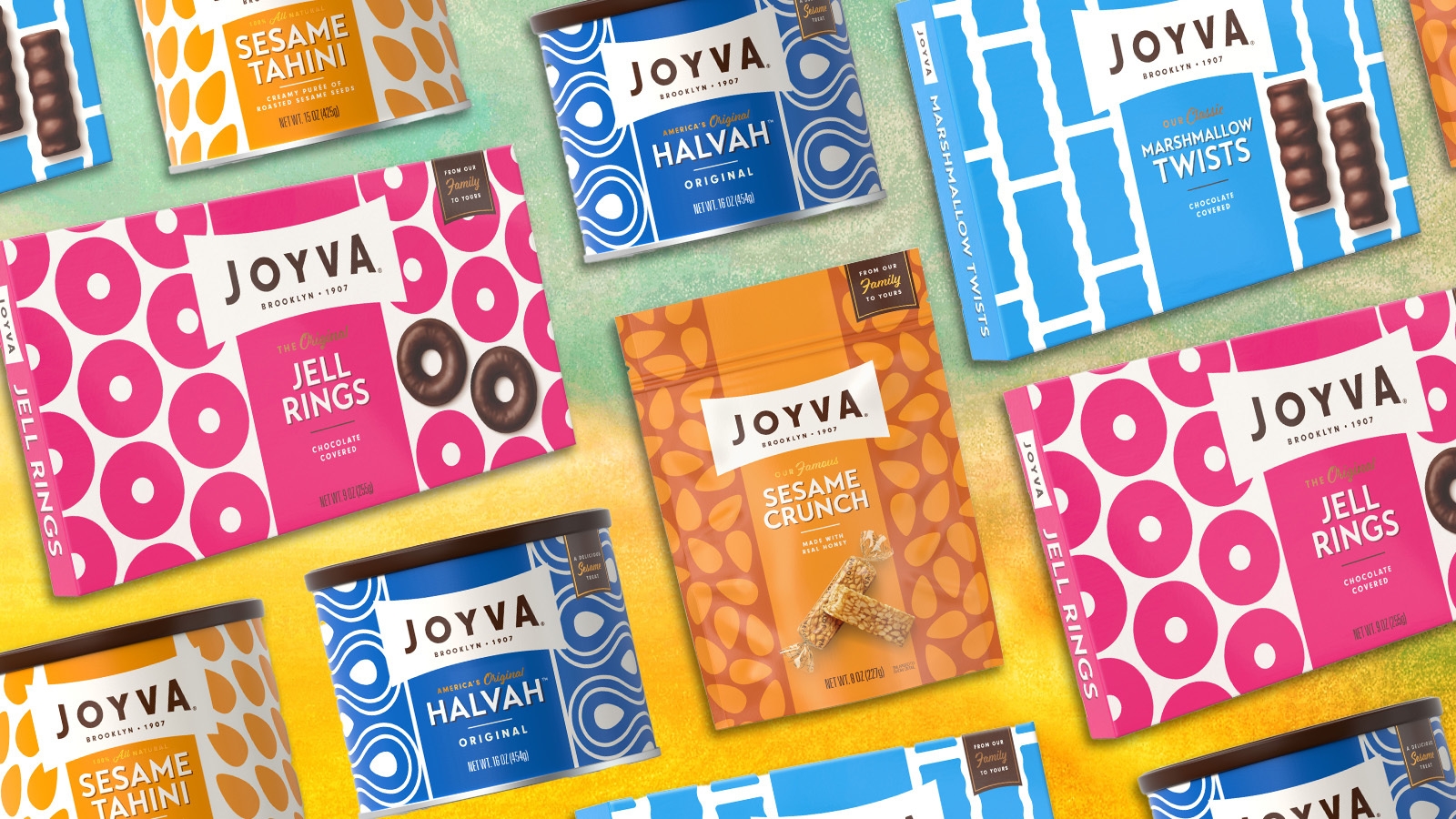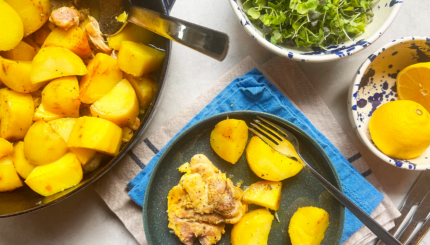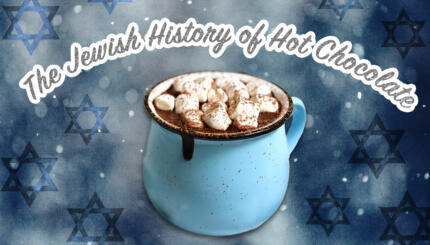Cousins Richard Radutzky and Sandy Wiener grew up with major bragging rights. Both boys could boast to friends that their family made candy for a living. Career Day at their schools inevitably involved one of their fathers bringing in a giant bar of chocolate to wow the room and treats to share with all of their classmates. Richard and Sandy grew up in Brooklyn, New York in the shadow of their family business, Joyva, makers of tahini, halvah and other confections. The two, who now run the business along with Richard’s son, Ben Radutzky, vividly remember operating the freight elevator (Richard’s first “job”) and scampering underfoot at the factory, during long games of hide-and-seek.
Arriving in New York from Ukraine in 1906, Jewish immigrant Nathan Radutzky had little to his name, but he carried with him a family recipe for halvah that his wife, Ray, encouraged him to sell. Halvah originated in the Middle East and traveled north through the Balkans and to Eastern Europe thanks to migrating Jews. Nathan’s family in Ukraine were in the grain business, so halvah, which was made from sunflower seeds in that area, would have been familiar to him. In 1907, Radutzky set out with a pushcart of halvah through the Lower East Side of Manhattan, where he immediately found an audience for the sweetened sesame seed confection.
“I’m sure there were a number of people living alongside him on the Lower East Side that grew up with halvah, were familiar with halvah, and enjoyed it; and it probably brought them back to their home a little bit,” says Ben. “It was a welcome bit of the life that they had just left behind to keep them attached to it.”
By 1909, Nathan Radutzky had outgrown his Lower East Side route, so he set up a retail store on nearby Orchard Street. Interest continued to grow and just a couple of years later, Nathan relocated to Brooklyn where he officially began Independent Halvah and Candies, Inc. and eventually built the factory, completed in 1931, that still houses the brand.
The Nosher celebrates the traditions and recipes that have brought Jews together for centuries. Donate today to keep The Nosher's stories and recipes accessible to all.
At the end of 1950, Independent Halvah and Candies Inc. introduced a sub-brand called Joyva, a portmanteau of halvah and Nathan’s granddaughter’s name, Roslyn Joy. In the following decade, the company would drop the name Independent Halvah and Candies in favor of the simpler moniker. And in 1961, the company introduced jellies and marshmallows enrobed in chocolate to the market, which have become a staple of Jewish households, Mah Jongg tables and Passover celebrations in the years since. Nowadays, Richard estimates, they make around 7,000 to 8,000 pounds of jellies per day.
Six decades later, Joyva is still very much a family business, helmed by Richard and Sandy. Richard’s son, Ben, the fourth generation to join the business, has been integral over the past few years in archiving the brand’s history and bringing the centenarian brand into modern times, something the original owners were never in a rush to do.
“They were risk-averse, they were set in their ways, they didn’t love change,” Richard Radutzky explains. “But, we’re uncovering their own entrepreneurship along the way. Our perspective was that they weren’t so quick to change, but at the same time, they did stuff that we can’t take for granted. They did take some chances. We have articles from Manufacturers Confectioner back in 1966 that we were the leader in vacuum-packed halvah technology.”
For the better part of 60 years, Joyva operated just as Nathan and his four sons envisioned it, working off of hand-written recipe cards and doing business with handshake agreements and phone calls. (To this day, folks who call Joyva HQ with a complaint may wind up talking to Richard or Sandy, which, Sandy says, goes a long way with the old-timers.) When Richard’s father Alex passed away in 2015 at the age of 93, he was still a vital part of the business, coming to work every day.
With the baton fully in Richard and Sandy’s hands, the duo brought in outside help to update the brand’s image while staying true to its origins. Gone are the artificial colors and flavors Joyva once used. They’ve been replaced with natural, fruit-based flavors and hues to appeal to an ingredient-conscious consumer. Gone, too, is the Sultan logo, a relic of the 1950s admen era. The refreshed Joyva hearkens back to the company’s vibrant and unique history. “Brooklyn 1907” is printed on the reimagined packaging, bringing in a smidge of storytelling and establishing Joyva as the pioneers of the industry. The updated packaging features bold colors and timeless graphic designs that evoke a hint of nostalgia with a modern touch.
“Our secret sauce has always been connection,” Richard notes. “We have handwritten letters from customers going back years and years. Everyone feels connected to this brand, not only connected but like they have a stake and a say. The rebrand and graphics took so much time and effort to make sure we were still who we were and were recognizable because we really didn’t want to piss off grandma, but we wanted to appeal to young people.”
Now in their late 50s, Richard and Sandy have bragging rights of another kind. When so many family businesses have been torn apart by infighting and generational upheaval, they are among the few who have managed to honor their family’s legacy while keeping it relevant and engaging for today’s audience, appealing to the newest generation of halvah lovers 115 years later.
“We have this cool story that other brands and companies try to make up,” Richard says with a laugh. “Here’s this rich, fertile story that people want to know about, and it actually makes the connection smarter and better. I get chills thinking about it, but it’s true.”



